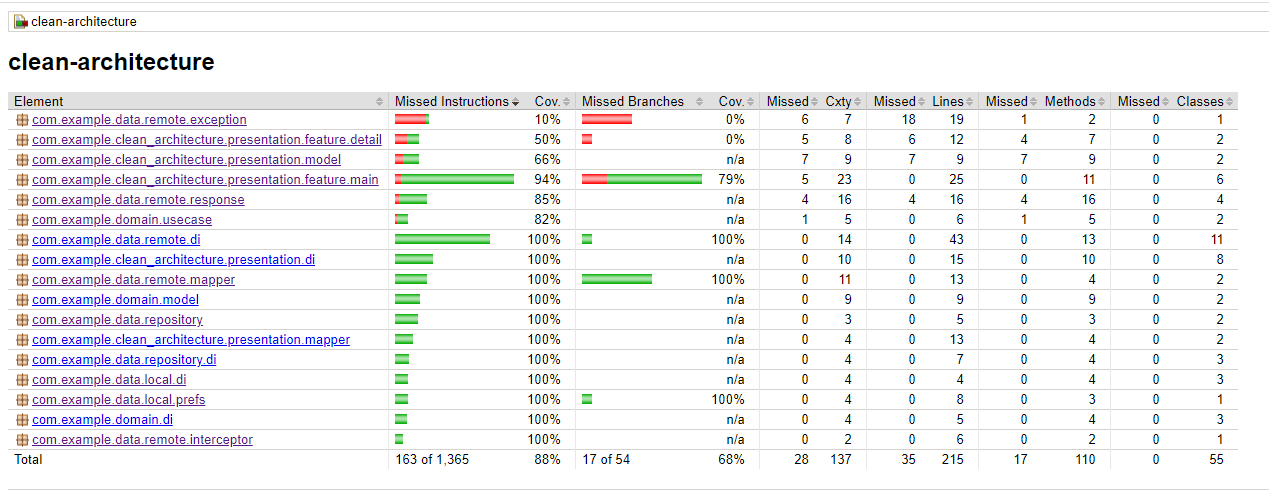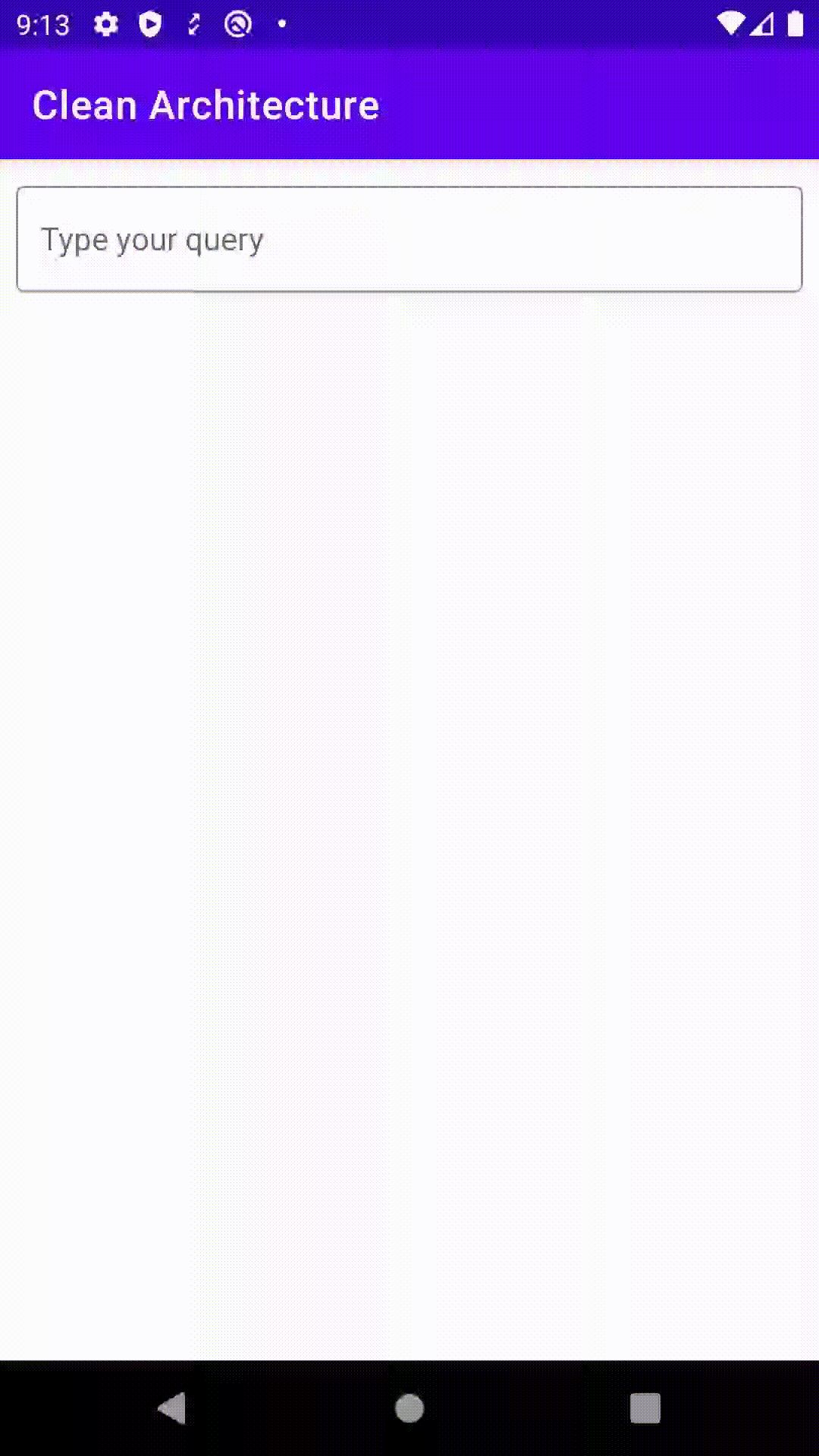This is an Android Architecture sample written in Kotlin using Clean Architecture and Jetpack components.
In this sample you'll find:
- Two product flavors,
devandprod. - Androidx packages fully replace the Support Library.
- Material Components for Android.
- A single-activity architecture, using the Navigation component to manage fragment operations.
- Reactive UIs using LiveData observables and Data Binding.
- Kotlin Coroutines for background operations.
- Koin supports lightweight dependency injection.
- Glide supports the image loading.
- Timber - A logger with a small, extensible API which provides utility on top of Android's normal Log class.
- Retrofit - A type-safe HTTP client for Android and Java.
- An OkHttp interceptor which logs HTTP request and response data.
- Chucker simplifies the inspection of HTTP(S) requests/responses, and Throwables fired by your Android App.
- LeakCanary - A memory leak detection library for Android.
- Mockk supports mocking for Kotlin testing.
- Local unit tests evaluate your app's logic more quickly and don't need the fidelity and confidence associated with running tests on a real device.
- MockWebServer - A scriptable web server for testing HTTP clients
- Robolectric supports running in a simulated Android environment inside a JVM.
- JaCoCo generates an aggregated JaCoCo test coverage report for all sub-projects.
- Presentation: The Views (Fragments or Activities) will interact with ViewModels which access the business logic through use cases.
- Domain: Holds all business logic and use cases represent all the possible actions able to being performed by the presentation module.
- Data: Contains all repository implements to access local or remote data
The project uses local unit tests that run on your computer. To run it and generate a coverage report, you can run:
./gradlew jacocoFullReport
You can see this report at: ./build/reports/jacoco/html/index.html

You can easily write Unit Test up to 70% code coverage lines of code (LOC), if you write focus on
- Presentation:
ViewModel,Mapper - Domain:
UseCase,Repository,Exceptionhandlers - Data: API service, local (database, shared preferences),
RepositoryImpl,Mapper
